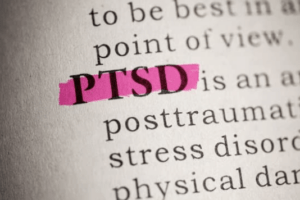
Yes, your PTSD rating can be reduced. The U.S. Department of Veterans Affairs (VA) can lower your disability rating and reduce your monthly benefits for PTSD if it finds evidence that your condition has improved. But it must follow certain guidelines in doing so.
Before the VA can reduce your disability rating for PTSD (or any service-connected disability), it must send you a notification letter explaining the VA’s proposal to reduce you. Upon receipt of this letter, you have the right to request a hearing, where you — and your advocate if you choose — can argue against a rating reduction, but you must request the personal hearing within the time frame specified on the notice letter. Upon receipt of this letter, you also have the right to submit evidence to the VA but again you must submit the evidence within the time frame specified on the notice letter.
Why VA May Reduce Your Disability Rating for PTSD
Your VA disability rating for PTSD is based on how your condition affects your ability to work and carry out daily living activities. When you get approved for benefits for PTSD or any other condition, the VA assigns you a disability rating between 0% and 100% in increments of 10%.
This rating shows the level of functional impairment caused by your condition, based on the VA’s review of your medical records and supporting documents.
For PTSD and most mental disorders, you will receive one of six disability ratings: 0%, 10%, 30%, 50%, 70%, or 100%. The criteria to receive each of these ratings are:
- 100% rating: “Total occupational and social impairment, due to such symptoms as gross impairment in thought processes or communication; persistent delusions or hallucinations; grossly inappropriate behavior; persistent danger of hurting self or others; intermittent inability to perform activities of daily living (including maintenance of minimal personal hygiene); disorientation to time or place; memory loss for names of close relatives, own occupation, or own name.”
- 70% rating: “Occupational and social impairment, with deficiencies in most areas, such as work, school, family relations, judgment, thinking, or mood, due to such symptoms as suicidal ideation; obsessional rituals which interfere with routine activities; speech intermittently illogical, obscure, or irrelevant; near-continuous panic or depression affecting the ability to function independently, appropriately and effectively; impaired impulse control (such as unprovoked irritability with periods of violence); spatial disorientation; neglect of personal appearance and hygiene; difficulty in adapting to stressful circumstances (including work or a work like setting); inability to establish and maintain effective relationships.”
- 50% rating: “Occupational and social impairment with reduced reliability and productivity due to such symptoms as: flattened affect; circumstantial, circumlocutory, or stereotyped speech; panic attacks more than once a week; difficulty in understanding complex commands; impairment of short and long-term memory (e.g., retention of only highly learned material, forgetting to complete tasks); impaired judgment; impaired abstract thinking; disturbances of motivation and mood; difficulty in establishing and maintaining effective work and social relationships.”
- 30% rating: “Occupational and social impairment with occasional decrease in work efficiency and intermittent periods of inability to perform occupational tasks (although generally functioning satisfactorily, with routine behavior, self-care, and conversation normal), due to such symptoms as: depressed mood, anxiety, suspiciousness, panic attacks (weekly or less often), chronic sleep impairment, mild memory loss (such as forgetting names, directions, recent events).”
- 10% rating: “Occupational and social impairment due to mild or transient symptoms which decrease work efficiency and ability to perform occupational tasks only during periods of significant stress, or; symptoms controlled by continuous medication.”
- 0% rating: “A mental condition has been formally diagnosed, but symptoms are not severe enough either to interfere with occupational and social functioning or to require continuous medication.”
The rating you receive is assigned by the VA when your service connection is established. But PTSD can either improve or deteriorate over time. If it does either, VA may attempt to raise or lower your disability rating to match your current condition.
Suppose you return from combat with PTSD so bad that you can barely leave the house or feed yourself, much less work. You apply for disability and submit ample supporting evidence detailing the extent of your condition. VA assigns you a 100% rating based on your inability to work or carry out daily living activities.
But then you undergo intensive therapy. One year later, you still have PTSD, but it is now moderate, and you can hold down a job. If the VA decides to re-examine you, it may lower your rating from 100% to 50%.
Call 1-888-373-4722 or complete a Free Case Evaluation form
When VA Cannot Lower Your Disability Rating for PTSD
There are a few situations where the VA cannot lower your disability rating for PTSD. They are as follows:
You Have Had the Same Rating for 20 Years
If you have had the same disability rating for PTSD for 20 years, VA cannot lower your rating, except in the claim of fraud. For example, if you received a disability rating of 50% in January 1997, starting in January 2017 your rating can never fall below that amount unless VA finds evidence that you obtained it fraudulently.
If you have had VA disability for 20 years and your rating has gone up and down during that time, VA cannot reduce it any further than its lowest point during that period. For example, if you received your rating in January 1997 and it swung between 30% and 100% for two decades, then starting in January 2017 it cannot fall below 30%.
VA Classified You as Permanently and Totally Disabled
Permanent and total disability is a special classification used by VA when it believes that a veteran’s condition results in a total disability that is reasonably certain to continue throughout the life of the disabled veteran.
Once you receive this classification, your rating is mostly safe. Only in very rare situations, such as fraud, can VA lower the rating of a veteran who has a permanent and total disability.
Call Today for Your Free VA Disability Claim Evaluation: 1-(888) 373-4722
A VA disability advocacy group is ready to help you with any VA disability issue you are facing. Call 1-(888) 373-4722 for your free claim evaluation.
Call 1-888-373-4722 or complete a Free Case Evaluation form






